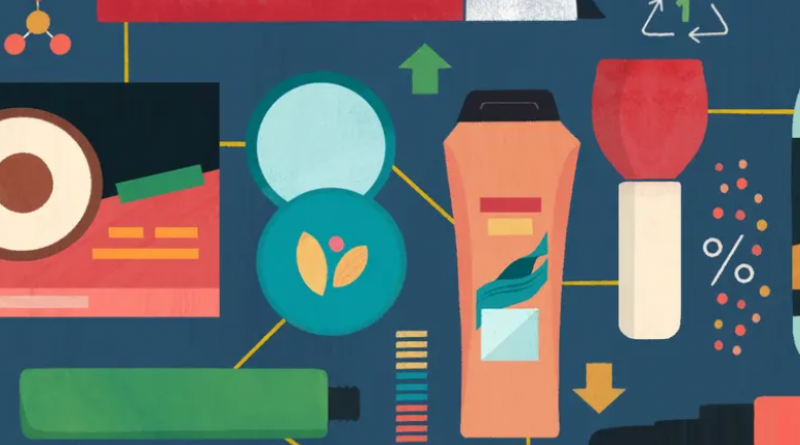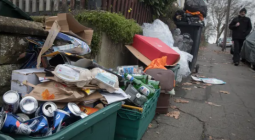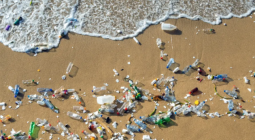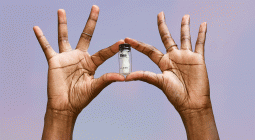‘Can be recycled’: the latest must-have for beauty industry packaging

Cosmetic and skincare brands are increasingly keen to highlight their sustainable credentials – but, says Sarah LaBrecque, there’s a complex story behind the labelling that appears on everything from shampoo bottles to toothpaste
“Recycled.”
“This bottle is made of 100% recycled plastic collected from rivers and coastal areas.”
“Bottle made with 25% recycled plastic.”
“This bottle contains 20% recycled plastic, which saves 270 tonnes of virgin plastic per year.”
From high street to high end, claims such as these are increasingly showing up on the labels of beauty and personal care products. It’s estimated the beauty industry produces billions of units of packaging per year, and it has some of the trickiest items to responsibly dispose of – those wands, sponges, nozzles and tubes have a lot to answer for. But some major players in the beauty space are keenly aware that the climate and biodiversity crisis will wait for no one, and they have a responsibility to mitigate it.
And while demand from consumers for more sustainable options was already rising pre-pandemic, these demands will be even more important as the sector regains strength. Overall retail sales in the beauty industry fell by 15% in 2020, but experts predict a return to growth by next year, with sustainability as one of the key priorities.
As part of this drive, diverse strategies – from refill solutions and packaging material swaps, to prioritising ingredients from renewable sources – are being employed. Key among these tactics is incorporating recycled plastic into packaging, part of broader goals that many beauty industry heavy hitters have set, to reduce the amount of virgin fossil-based plastic in their supply chains. For instance, Henkel, the consumer goods company behind brands such as Schwarzkopf, Fa and Nature Box, has pledged a 50% reduction by 2025.
For consumers looking for easy-to-understand sustainability indicators, the “made of recycled content” stamp seems fairly straightforward. And within beauty packaging, it’s almost become de rigueur. Analysis done by Euromonitor International found that “recycled” claims were by far the most commonly used packaging sustainability claim used by global skincare brands, appearing 8.5 times more often than “can be recycled”.
But what complexity lies behind these recycled content promises? As it turns out, quite a lot. “In the end, it is waste you’re using to put back into products, [and there are] a lot of challenges that come with that,” says Sandra Breuer, a senior sustainability manager for the beauty care division of Henkel.
Sourcing and processing aside, what has recently come to light is the need for industry standards around formulations and quality of post-consumer recycled plastic, specifically for use in cosmetics and other products such as household cleaners. Packaging needs to be safe from a human health and environmental point of view and this is especially critical for the beauty industry, where products come into contact with the skin, and are often washed down the sink. Such standards already exist for recycled plastics destined for food packaging – so-called “food grade” – but not for recycled plastic that might end up in your shampoo bottle.
Enter CosPaTox (which stands for cosmetics, packaging and toxicology), an industry consortium formed in March this year. The group aims to develop safety standards for post-consumer plastic recyclate (PCR) for cosmetics and some cleaning product packaging, and their modus operandi is very much aligned to sustainability. How so? The more assured companies can be that PCR is safe and high quality, the more of it they’re going to use, says Doris Peters, project manager at CosPaTox. “For a shampoo bottle or container of floor cleaner, food standard [recycled plastic] is not really required,” she explains, but not wanting to take any risks, some companies were using it anyway. Meaning an excess of non-food grade recycled plastic potentially piling up. Without a standard in place, “we accumulate this huge [amount] of recycled plastics, but we cannot use it because it doesn’t meet the very high food standard”, she says.
So what sorts of undesirable things is CosPaTox looking out for in PCR? For one, chemicals that come with the recycled resin that could have an adverse effect on skin, says Peters. “Also, we look at those materials which may have a negative impact on the smell. That can be an issue when recycled materials are used.”
In the absence of industry-wide standards, what have companies been doing? Peters says larger companies will have their own toxicological standards in place, with their own in-house testing. Nevertheless, big players such as Henkel are still very supportive of the development of industry-wide standards. “Henkel was very active in driving the formation of CosPaTox,” she says.
Incorporating recycled plastic into its portfolio is something Henkel has been working on for some years. The Nature Box range – its “sustainability flagship brand”, says Breuer – relaunched this year with 98% recycled content in the bottle bodies. And later on in 2021, she says, it will achieve 100% recycled content. It’s not just any old recycled plastic either. It’s what Henkel calls “social plastic”, recovered through non-profit Plastic Bank from coastal areas around the world, such as Haiti.
Recycled plastics is just the beginning
For such a tiny stamp on a product label, the world of recycled plastic is incredibly complex. And it’s just one aspect of the sustainability measures that lie behind the everyday products in your bathroom.
Metin Tantalkaya has a global role within health, safety, environmental quality and sustainability for Henkel’s beauty care division. Every month, he sifts through reporting from its factories around the world: data on water, waste and CO2 emissions. “We are trying [always] to reduce, reduce, reduce,” says Tantalkaya, mentioning the company-wide goals it has in place, which form the backdrop to everything he and his colleagues do in their day-to-day. Per tonne of product, by 2025 Henkel aims to reduce CO2 emissions by 65%, waste by 50% and water consumption by 35%.
In working towards these figures, Tantalkaya spends his days analysing what measures are feasible, what’s working well and what’s not, and how Henkel can collaborate with other stakeholders. While one day he might be engaged at corporate level discussing topline sustainability targets, the next he’ll be working out how to reduce water within the machinery used to mix hair dyes.
Interestingly, although there is a significant amount of effort going on behind corporate closed doors to reduce emissions and total environmental footprint, Tantalkaya still emphasises the essential role that consumers play in this quest as well. In the case of water – both the total consumption and emissions related to heating it – many beauty products carry a heavy footprint in the use phase. We generally wash our faces and bodies with hot, running water, afterall. And thus, a whopping estimated 80% of water and carbon emissions associated with some beauty products come from the consumer use phase, he says.
His closing message? Watch out for those stamps on products that indicate concerted action is being taken to improve the sustainability credentials of your beauty products, but also, change your behaviour. “It should be a natural habit for all of us to be really respectful to the environment.”
28 September 2021
The Guardian





